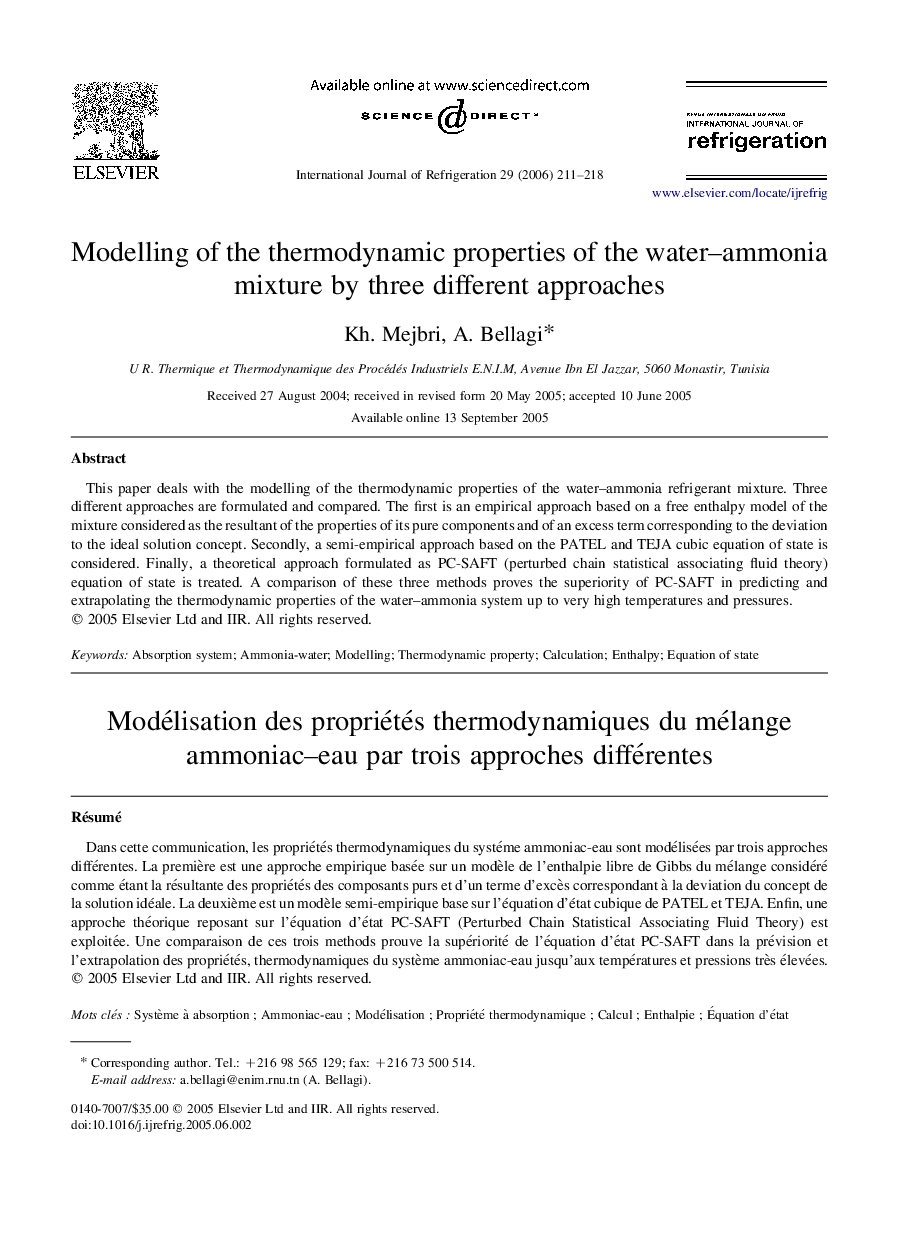| Article ID | Journal | Published Year | Pages | File Type |
|---|---|---|---|---|
| 793005 | International Journal of Refrigeration | 2006 | 8 Pages |
This paper deals with the modelling of the thermodynamic properties of the water–ammonia refrigerant mixture. Three different approaches are formulated and compared. The first is an empirical approach based on a free enthalpy model of the mixture considered as the resultant of the properties of its pure components and of an excess term corresponding to the deviation to the ideal solution concept. Secondly, a semi-empirical approach based on the PATEL and TEJA cubic equation of state is considered. Finally, a theoretical approach formulated as PC-SAFT (perturbed chain statistical associating fluid theory) equation of state is treated. A comparison of these three methods proves the superiority of PC-SAFT in predicting and extrapolating the thermodynamic properties of the water–ammonia system up to very high temperatures and pressures.
RésuméDans cette communication, les propriétés thermodynamiques du systéme ammoniac-eau sont modélisées par trois approches différentes. La première est une approche empirique basée sur un modèle de l'enthalpie libre de Gibbs du mélange considéré comme étant la résultante des propriétés des composants purs et d'un terme d'excès correspondant à la deviation du concept de la solution idéale. La deuxième est un modèle semi-empirique base sur l'équation d'état cubique de PATEL et TEJA. Enfin, une approche théorique reposant sur l'équation d'état PC-SAFT (Perturbed Chain Statistical Associating Fluid Theory) est exploitée. Une comparaison de ces trois methods prouve la supériorité de l'équation d'état PC-SAFT dans la prévision et l'extrapolation des propriétés, thermodynamiques du système ammoniac-eau jusqu'aux températures et pressions très élevées.
